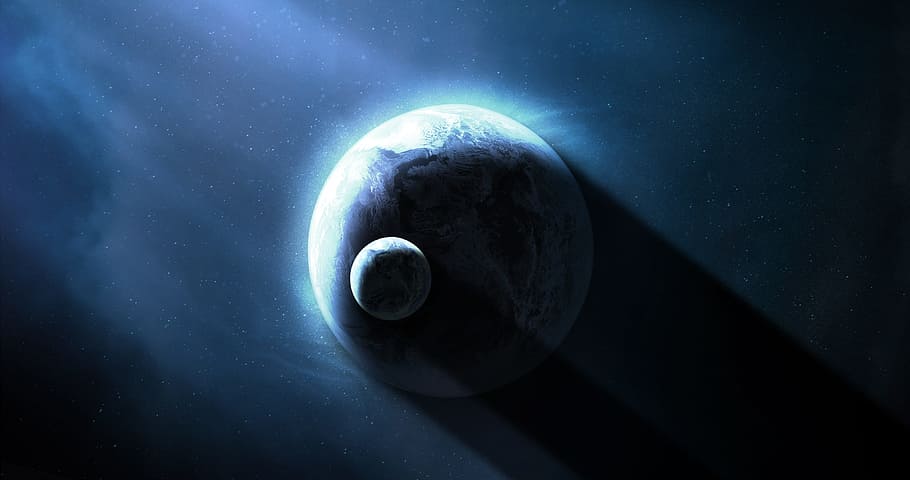Gravitation is one of the fundamental forces in the universe. First studied in detail by Sir Isaac Newton, it describes the attraction between two masses, such as planets or stars. Gravitation is responsible for keeping planets in orbit around stars, and stars in orbit within galaxies. It is also responsible for the formation of stars and galaxies, as well as the tendency of objects to move towards one another.
In order to understand gravitation, we need to understand the concept of mass. Mass is a measure of how much matter an object contains. It is often confused with weight, but weight is actually a measure of the force of gravity acting on an object with mass. The greater an object's mass, the greater its gravitational attraction to other objects. This is why the Earth has a stronger gravitational pull than the Moon; it has a greater mass.
Newton's Law of Universal Gravitation states that every particle of matter in the universe attracts every other particle of matter with a force that is directly proportional to their masses and inversely proportional to the square of the distance between them. This means that the greater the masses of the two objects, the greater the force of attraction between them. However, the farther apart the objects are, the weaker the force of attraction between them. This explains why you weigh less at the top of a mountain than you do at sea level; the force of gravity is weaker at higher altitude due to the increased distance from the Earth.
The formula for calculating the force of gravity between two objects is F=G(m1m2/d^2), where F is the force of attraction, G is the gravitational constant, m1 and m2 are the masses of the two objects, and d is the distance between their centers of mass. The gravitational constant is a universal constant that determines the strength of the force of gravity between two objects with a given mass and distance. Its value is approximately 6.674 x 10^-11 N(m/kg)^2.
One of the most important applications of gravitation is in the study of orbital motion. Orbital motion is the motion of an object in a gravitational field, such as a planet orbiting a star. The force of gravity is responsible for the elliptical shape of planetary orbits, as well as their speeds and periods. The more massive the planet, the greater the force of gravity, which results in a higher orbital velocity and a shorter orbital period.
Gravitation also plays a key role in cosmology, the study of the origin, evolution, and structure of the universe. It is believed that the universe began with a Big Bang, which created all matter and energy in the universe. Gravitation played a critical role in the formation of galaxies and the large-scale structure of the universe. The current model of the universe, known as the Lambda-CDM model, assumes that the universe is dominated by dark matter and dark energy, both of which are influenced by gravitation but not well-understood.
In addition to its role in planetary motion and cosmology, gravitation also plays a role in everyday life. It is responsible for the weight of objects, the behavior of fluids, and the tides. The tides are caused by the gravitational attraction of the Moon and the Sun on the Earth's oceans. As the Earth rotates, the ocean tides rise and fall, creating the familiar pattern of high and low tides.
In conclusion, gravitation is a fundamental force of nature that plays a crucial role in the behavior of objects in our universe. It is responsible for the orbital motion of planets and stars, the formation of galaxies and the large-scale structure of the universe, and the behavior of fluids and tides. While its precise nature is still not fully understood, our understanding of gravitation has allowed us to make incredible advances in our understanding of the world around us.



